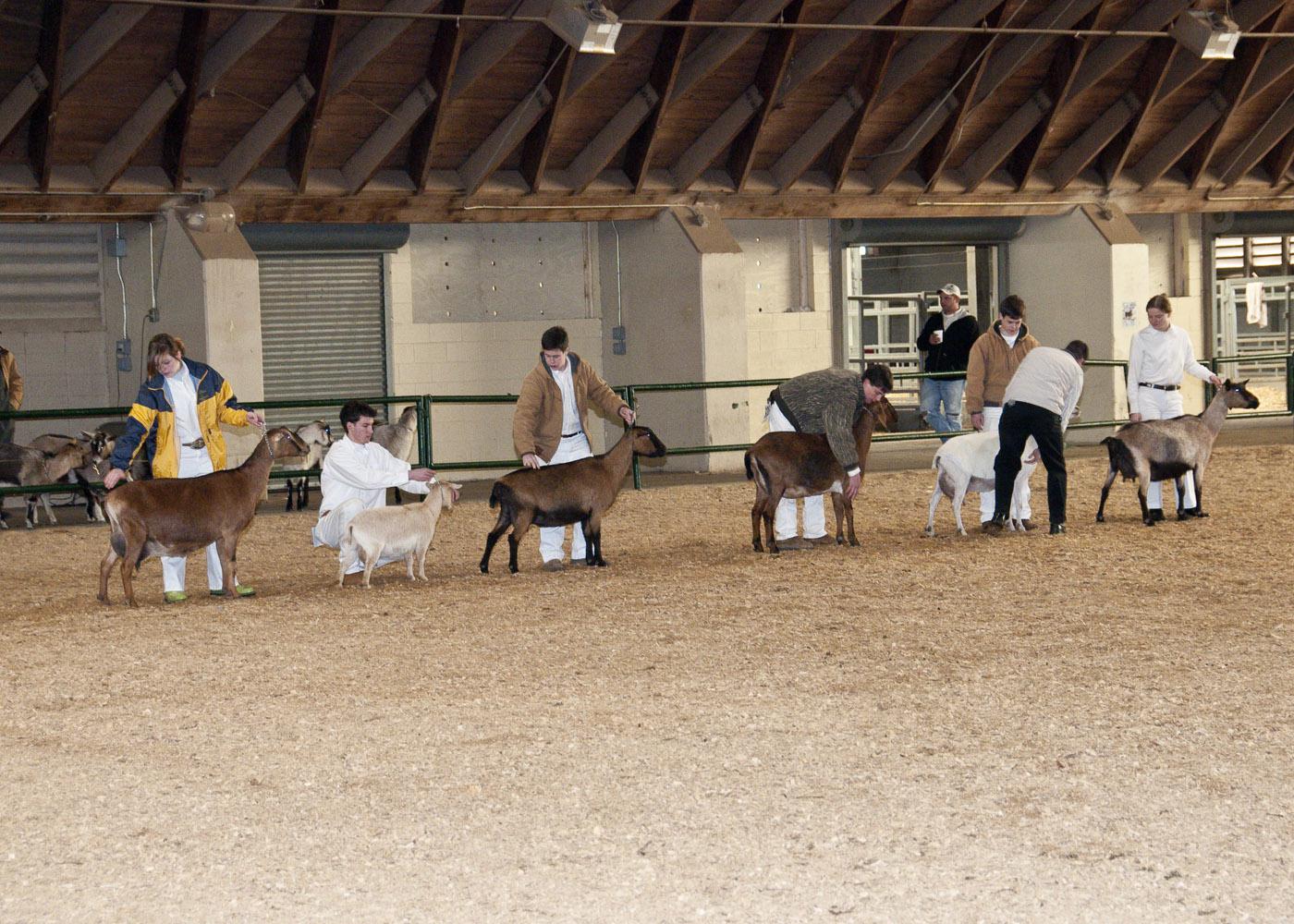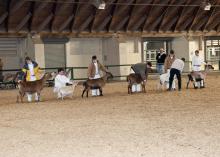Information Possibly Outdated
The information presented on this page was originally released on April 5, 2012. It may not be outdated, but please search our site for more current information. If you plan to quote or reference this information in a publication, please check with the Extension specialist or author before proceeding.
Goats provide easy starting point for kids
MISSISSIPPI STATE -- Take a look at 4-H livestock show rings anywhere in the state. There are nearly as many goats as hogs, sheep or steers.
“We’ve increased the numbers of goats shown by about 25 percent each year since the first year,” said Kipp Brown, area 4-H livestock agent and meat goat specialist with Mississippi State University’s Extension Service. “It’s helping the kids, the producers and the 4-H program.”
The first statewide market meat goat show was held at the Mississippi State Fair in 1996. Market goats were added to the district-level shows in 1999. By 2001, interest in show goats had increased enough to merit adding goats to the statewide Dixie National Livestock Show.
The popularity of the small ruminants stems largely from their disposition.
“It’s hard for an 8-year-old to handle a 125- to 150-pound lamb because lambs can be very stubborn and very strong,” Brown said. “A 250-pound hog and an even larger calf also can be intimidating.
“But the personality of a goat makes it a logical animal to start a young person with. Goats are inquisitive and docile by nature. When you add the element of human interaction, they become even easier to handle,” he said.
Debbie Huff, of Brandon, said that is the reason her oldest son David, now 18, started showing livestock with a dairy goat.
“David was small for his age,” Huff said. “At 8 years old, he was timid and shy and a little bit afraid of the horses and cattle we had. So we let him show a dairy goat in 2001, and that was it. He told us he wanted to show dairy goats, and that’s what he’s done for 11 years.”
Goats are also a good beginner project for children because of their relatively low cost. Goats can range in price from $150 to $250 or more. A set of clippers costs about $100, and feed for a year is $50 to $100. Getting to the shows is easy with an inexpensive cage in the bed of a pickup.
“Starting with an inexpensive and gentle animal allows the child to learn to feed it properly and learn showmanship,” Brown said. “If children can first learn to feed the goat to the proper weight, exercise him, measure his fat content, and all the other things they have to do to show the goat, it is easier for them to move on to larger, less cooperative livestock.”
But it is rare for a child to give up showing goats, even if they move on to larger livestock.
“A lot of times, once kids are 10 or 12 or 13, they move into lambs and cattle, but most of them keep the goats because they like them,” Brown said. “The kids love the goats, and the goats love them.”
That is not a bad deal for kids or parents.
“It’s the same concept as taking piano lessons,” Brown said. “You probably won’t make money showing goats, but you are teaching life skills. It doesn’t matter what is used to train young people. To me, a goat is just a simple way to do it.”
David’s parents, who homeschool all four of their boys, agree.
“When David decided he wanted to show goats, we saw the opportunity there to use the milk and the animals to teach the boys even more,” Huff said. “Just because we raise livestock doesn’t mean our kids have to do that for the rest of their lives. It’s a pathway to develop abilities to do so many other things. Everything we do in life requires that we be responsible, dedicated participants, and raising goats teaches my kids those skills.”
David Huff, who plans to study engineering, begins college in August.
“We knew that having our boys involved in 4-H would teach them responsibility and accountability and instill in them a work ethic,” Debbie Huff said. “People involved in the admissions process are piecing all of that together. We were not just raising goats. There was a plan in all that work. We were preparing our sons for life.”




